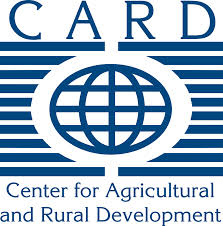 A new analysis of real-world land use data by Iowa State University raises serious concerns about the accuracy of models used by regulatory agencies regarding “indirect land use changes” (ILUC) attributed to biofuels production.
A new analysis of real-world land use data by Iowa State University raises serious concerns about the accuracy of models used by regulatory agencies regarding “indirect land use changes” (ILUC) attributed to biofuels production.
The study, conducted by Prof. Bruce Babcock and Zabid Iqbal at ISU’s Center for Agricultural and Rural Development (CARD), examined actual observed global land use changes in the period spanning from 2004 to 2012 and was compared to predictions from the economic models used by the California Air Resources Board (CARB) and Environmental Protection Agency (EPA) to develop ILUC penalty factors for regulated biofuels. The report concluded that farmers around the world have responded to higher crop prices in the past decade by using available land resources more efficiently rather than expanding the amount of land brought into production.
 “There hasn’t been much land use change in terms of converting non-agricultural land into crop land,” said Renewable Fuels Association (RFA) Senior Vice President Geoff Cooper. “We’ve seen more double-cropping, we’ve seen triple-cropping in some parts of the world. And, very interestingly, we’ve seen an increase in the amount of planted acres that are harvested.”
“There hasn’t been much land use change in terms of converting non-agricultural land into crop land,” said Renewable Fuels Association (RFA) Senior Vice President Geoff Cooper. “We’ve seen more double-cropping, we’ve seen triple-cropping in some parts of the world. And, very interestingly, we’ve seen an increase in the amount of planted acres that are harvested.”
Cooper says the study, which was funded in part by RFA, comes at a time when the California ARB is in the process of re-adopting its low carbon fuel standard, which includes revisiting their land use analysis. “So this paper, we hope, should inform that debate and bring some clarity and commonsense,” said Cooper. More importantly, this new analysis can provide input to states like Oregon and Washington which are currently working on developing low carbon fuel standards.
Cooper explains more in this interview: Interview with Geoff Cooper, RFA

